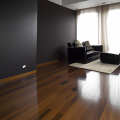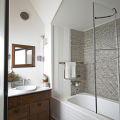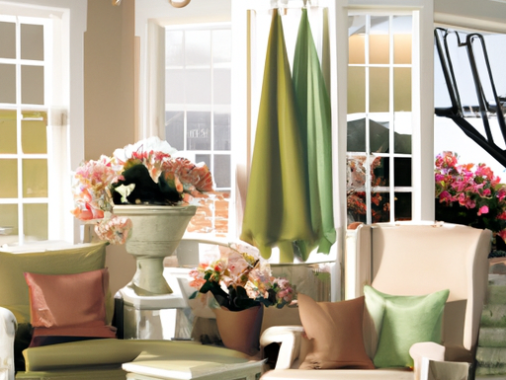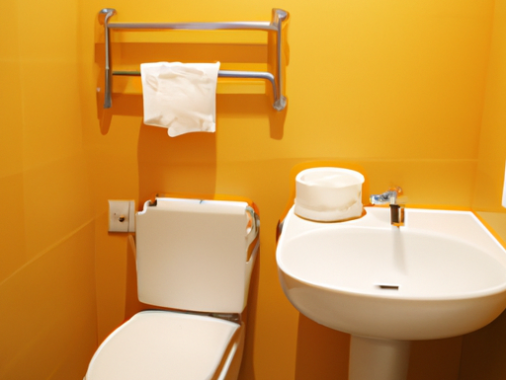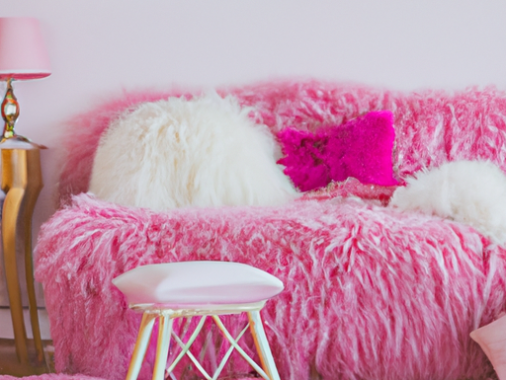-
Table of Contents
- Introduction
- How to Create a Relaxing Meditation Room in Your Home
- The Benefits of Incorporating a Meditation Room into Your Home
- Tips for Designing a Meditation Room on a Budget
- How to Choose the Right Furniture for Your Meditation Room
- The Best Essential Oils to Use in Your Meditation Room
- How to Incorporate Feng Shui into Your Meditation Room
- The Benefits of Adding a Water Feature to Your Meditation Room
- Q&A
- Conclusion
Introduction
Welcome to the meditation room! This is a special place where you can come to relax, reflect, and find inner peace. Here, you can take a break from the hustle and bustle of everyday life and find a moment of stillness. Whether you are a beginner or an experienced meditator, this room is designed to help you find a sense of calm and clarity. Take a few moments to explore the space and find a comfortable spot to sit or lie down. Let go of any worries or stress and allow yourself to be present in the moment. Enjoy your time here and may you find peace and tranquility.
How to Create a Relaxing Meditation Room in Your Home
Creating a relaxing meditation room in your home can be a great way to find peace and tranquility in your daily life. With a few simple steps, you can create a space that is perfect for meditation and relaxation.
First, choose a room in your home that is quiet and away from distractions. This could be a spare bedroom, a corner of your living room, or even a closet. Make sure the room is well-ventilated and has plenty of natural light.
Next, choose comfortable furniture and decor that will help you relax. A comfortable chair or cushion is essential for meditation. You may also want to add a few items such as candles, incense, or a fountain to create a calming atmosphere.
Finally, add items that will help you focus on your meditation. This could include a yoga mat, a meditation cushion, or a meditation altar. You may also want to add some calming music or a guided meditation recording to help you relax.
By following these steps, you can create a peaceful and relaxing meditation room in your home. With a little effort, you can create a space that will help you find inner peace and tranquility.
The Benefits of Incorporating a Meditation Room into Your Home
Meditation is a practice that has been used for centuries to help people relax, reduce stress, and improve their overall mental and physical health. Incorporating a meditation room into your home can provide numerous benefits, from improved mental clarity to increased physical wellbeing.
First, having a dedicated space for meditation can help to create a sense of calm and relaxation. When you enter the room, you can immediately feel the atmosphere shift, allowing you to focus on your practice and let go of any stress or worries. This can be especially beneficial if you have a busy lifestyle and need a place to escape from the hustle and bustle of everyday life.
Second, having a meditation room can help to improve your mental clarity. When you meditate, you are able to clear your mind and focus on the present moment. This can help to reduce stress and anxiety, as well as improve your ability to think clearly and make decisions.
Third, incorporating a meditation room into your home can also help to improve your physical wellbeing. Meditation can help to reduce blood pressure, improve sleep, and reduce muscle tension. It can also help to boost your immune system and reduce inflammation.
Finally, having a meditation room can be a great way to connect with yourself and your spirituality. It can be a place to practice mindfulness and connect with your inner self. This can help to bring a sense of peace and balance to your life.
Incorporating a meditation room into your home can provide numerous benefits, from improved mental clarity to increased physical wellbeing. It can be a great way to relax, reduce stress, and connect with yourself and your spirituality. With the right environment and dedication, you can reap the many benefits of meditation.
Tips for Designing a Meditation Room on a Budget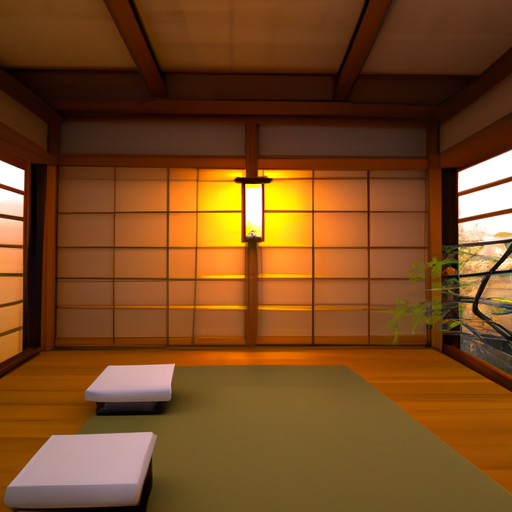
1. Choose a Room: Select a room in your home that is quiet and free from distractions. Consider a room that is not used often, such as a spare bedroom or a corner of a larger room.
2. Choose a Color Scheme: Choose a color scheme that is calming and soothing. Neutral colors such as blues, greens, and whites are ideal for creating a peaceful atmosphere.
3. Add Soft Lighting: Soft lighting is essential for creating a relaxing atmosphere. Consider adding a few lamps or candles to the room.
4. Add Comfortable Seating: Invest in comfortable seating such as a yoga mat, meditation cushion, or bean bag chair.
5. Add Decorative Elements: Add decorative elements such as plants, artwork, and crystals to the room. These items can help to create a calming atmosphere.
6. Add Aromatherapy: Aromatherapy can help to create a calming atmosphere. Consider adding essential oils, incense, or candles to the room.
7. Add Music: Music can help to create a peaceful atmosphere. Consider adding a sound system or a few CDs to the room.
8. Add a Journal: A journal can be a great way to document your meditation journey. Consider adding a journal to the room.
9. Add a Meditation Timer: A meditation timer can help to keep track of your meditation sessions. Consider adding a timer to the room.
10. Keep it Simple: Remember to keep the room simple and clutter-free. This will help to create a peaceful atmosphere.
How to Choose the Right Furniture for Your Meditation Room
Creating a meditation room in your home is a great way to create a peaceful and calming environment for relaxation and reflection. When choosing the furniture for your meditation room, it is important to consider the size of the room, the purpose of the room, and the overall aesthetic you are trying to achieve.
Size of the Room
The size of the room will determine the type of furniture you can choose. If the room is small, you may want to opt for furniture that is lightweight and can be easily moved around. A small meditation bench or a few floor cushions are ideal for a small space. If the room is larger, you can choose larger pieces such as a comfortable armchair or a chaise lounge.
Purpose of the Room
When selecting furniture for your meditation room, it is important to consider the purpose of the room. If you plan to use the room for yoga or stretching, you may want to choose furniture that is comfortable and supportive. A yoga mat, a few blocks, and a bolster are all great options for a yoga-focused meditation room. If you plan to use the room for more traditional meditation, you may want to choose furniture that is comfortable and supportive, but also allows you to sit in a comfortable position for long periods of time. A meditation bench or a comfortable armchair are both great options.
Overall Aesthetic
The overall aesthetic of the room should also be taken into consideration when selecting furniture. If you want to create a calming and peaceful atmosphere, you may want to choose furniture that is neutral in color and made of natural materials such as wood or bamboo. If you want to create a more vibrant and energizing atmosphere, you may want to choose furniture that is brightly colored and made of synthetic materials.
By considering the size of the room, the purpose of the room, and the overall aesthetic you are trying to achieve, you can easily choose the right furniture for your meditation room. With the right furniture, you can create a peaceful and calming environment that is perfect for relaxation and reflection.
The Best Essential Oils to Use in Your Meditation Room
Meditation is a powerful practice that can help to reduce stress, improve focus, and promote relaxation. Creating a dedicated meditation space in your home can help to create a calming atmosphere and provide a place to practice your meditation. Essential oils can be used to enhance the atmosphere of your meditation room and help to create a peaceful and calming environment. Here are some of the best essential oils to use in your meditation room:
1. Lavender: Lavender is one of the most popular essential oils for relaxation and meditation. Its calming and soothing aroma can help to reduce stress and anxiety, and promote a sense of peace and tranquility.
2. Frankincense: Frankincense is a grounding and calming oil that can help to reduce stress and promote relaxation. It has a sweet, woody aroma that can help to create a peaceful atmosphere.
3. Bergamot: Bergamot is a citrusy oil that has a sweet, uplifting aroma. It can help to reduce stress and anxiety, and promote a sense of joy and optimism.
4. Ylang Ylang: Ylang Ylang is a sweet, floral oil that can help to reduce stress and promote relaxation. Its calming aroma can help to create a peaceful atmosphere.
5. Sandalwood: Sandalwood is a woody, earthy oil that can help to reduce stress and promote relaxation. Its calming aroma can help to create a peaceful atmosphere.
Using essential oils in your meditation room can help to create a peaceful and calming atmosphere. Choose the oils that best suit your needs and preferences, and enjoy the benefits of a peaceful and relaxing meditation space.
How to Incorporate Feng Shui into Your Meditation Room
Meditation is a powerful practice that can help to reduce stress, improve focus, and promote overall wellbeing. Incorporating feng shui into your meditation room can help to create a peaceful and calming atmosphere that will enhance your practice. Here are some tips for incorporating feng shui into your meditation room:
1. Choose a Room with Good Energy: The first step in creating a feng shui meditation room is to choose a room with good energy. Look for a room that is quiet, peaceful, and free from distractions.
2. Choose the Right Colors: Colors can have a powerful effect on our mood and energy levels. Choose colors that are calming and soothing, such as blues, greens, and purples. Avoid bright colors, such as reds and oranges, which can be too stimulating.
3. Add Natural Elements: Incorporating natural elements into your meditation room can help to create a peaceful atmosphere. Consider adding plants, crystals, and other natural elements to the room.
4. Place Furniture Strategically: Furniture should be placed in a way that encourages relaxation and promotes good energy flow. Avoid placing furniture in a way that blocks the flow of energy.
5. Hang Artwork: Artwork can be a great way to add beauty and energy to your meditation room. Choose artwork that is calming and peaceful.
By following these tips, you can create a feng shui meditation room that will help to enhance your practice and promote overall wellbeing.
The Benefits of Adding a Water Feature to Your Meditation Room
Meditation is a practice that has been used for centuries to help people relax and find inner peace. Adding a water feature to your meditation room can help enhance your practice and provide a calming atmosphere. Here are some of the benefits of adding a water feature to your meditation room.
First, the sound of running water can be very soothing and calming. The sound of a water feature can help to drown out any other noise in the room, allowing you to focus on your meditation practice. The sound of running water can also help to create a sense of tranquility and peace, which can be beneficial for those who are trying to relax and find inner peace.
Second, the sight of a water feature can be very calming and peaceful. The sight of a waterfall or fountain can help to create a sense of serenity and can help to create a calming atmosphere. The sight of a water feature can also help to create a sense of balance and harmony in the room, which can be beneficial for those who are trying to find inner peace.
Finally, the presence of a water feature can help to create a sense of connection with nature. The presence of a water feature can help to remind us of the beauty of nature and can help to create a sense of connection with the natural world. This can be beneficial for those who are trying to find inner peace and relaxation.
Adding a water feature to your meditation room can be a great way to enhance your practice and create a calming atmosphere. The sound of running water can be very soothing and calming, the sight of a water feature can be very peaceful and calming, and the presence of a water feature can help to create a sense of connection with nature. All of these benefits can help to create a more peaceful and calming atmosphere in your meditation room.
Q&A
1. What is a meditation room?
A meditation room is a space dedicated to the practice of meditation, typically used for relaxation, contemplation, and spiritual growth.
2. What should I bring to a meditation room?
You should bring comfortable clothing, a cushion or mat to sit on, and any items that will help you focus on your meditation practice, such as candles, incense, or a mantra.
3. How do I create a meditation room?
Creating a meditation room is a personal process. Start by finding a quiet, comfortable space in your home. Then, add items that will help you focus on your practice, such as candles, incense, or a mantra. Finally, make sure the room is free of distractions and clutter.
4. What are the benefits of meditating in a room?
Meditating in a room can help you focus on your practice and create a sense of peace and tranquility. It can also help you to relax and reduce stress.
5. How often should I meditate in a room?
The frequency of your meditation practice is up to you. Some people meditate daily, while others may meditate once a week or even once a month.
6. What should I do if I get distracted while meditating in a room?
If you find yourself getting distracted while meditating in a room, take a few deep breaths and refocus on your practice. If necessary, move to a different area of the room or take a break and come back to your practice when you are ready.
7. Are there any rules I should follow when meditating in a room?
The most important rule to follow when meditating in a room is to be respectful of the space and the people around you. Additionally, it is important to be mindful of your own needs and to take breaks when necessary.
Conclusion
In conclusion, a meditation room can be a great addition to any home or office. It can provide a peaceful and calming environment for people to relax and practice mindfulness. It can also be a great way to reduce stress and anxiety, and to promote overall wellbeing. With the right design and furnishings, a meditation room can be a great place to relax and find inner peace.
